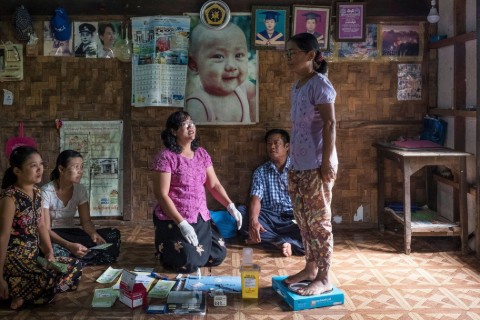Today, the World Health Assembly recognized that community health workers play an important role in delivering quality primary health care services as part of interdisciplinary teams. Through a resolution supported by Member States, the Assembly took note of the WHO Guideline on health policy and system support to optimize community health worker programmes. Building on 40 years of increasing recognition since the Declaration of Alma-Ata, the guideline presents a series of evidence-based recommendations to strengthen, reinvigorate and establish the system foundations and essential health system integration for this sector of the health workforce. Governments have committed to ensuring that every person has access to basic health services. Success cannot be measured by counting only the progress that is easy. It must be measured by documenting and sharing the progress that is hard-won: reaching those who are most vulnerable, furthest from health facilities, unable to afford services. This progress relies on health workers who are from these communities, speak the language and have the trust of those communities.

I think we all share the belief that the key to universal health coverage is to involve and grow the health care team. Community health workers should stand side-by-side with nurses and doctors to extend primary health care to every last child and family on earth,
Jim Campbell, WHO Health Workforce Director
Health workers are vital to building strong, resilient and safe health systems that contribute the achievement of the Sustainable Development Goals and to targets related to nutrition, education, health, gender, employment and reduction of inequalities. The WHO estimates, however, that there will be a gap of 18 million health workers by 2030, the bulk of which will be in low- and middle-income countries. We have known for several years that community health workers can effectively deliver a range of preventive, promotive and curative services. The CHW Guideline presents the state-of-the-art evidence and recommendations on how to capitalize on this potential by effectively embedding CHW programmes in health systems, and in broader health workforce and primary health care strategies.
Health workers are not a cost. They are an investment, with health, labour, equity and economic dividends. Community health worker jobs can provide decent work, particularly for women and vulnerable populations. To ensure quality, resources must be allocated to training, supervision, remuneration, supplies and effective integration into health systems. As health systems grow stronger and population health needs shift, envisioning a career ladder for community health workers can contribute to reducing the occupational gap currently projected.
“I think we all share the belief that the key to universal health coverage is to involve and grow the health care team. Community health workers should stand side-by-side with nurses and doctors to extend primary health care to every last child and family on earth”, said Jim Campbell, WHO Health Workforce Director. “To see countries making real commitments and real investments, arguing for the rights of workers to be paid and contracted and supervised, and advocating for stronger quality of care at the last mile is incredibly inspiring.”
Through today’s resolution, the World Health Assembly reinforced their commitment by recognizing and promoting optimization of community health worker programmes. With support from ministries of health, partners and interprofessional health teams, community health workers can help reach the goal of health for every person and every community.
